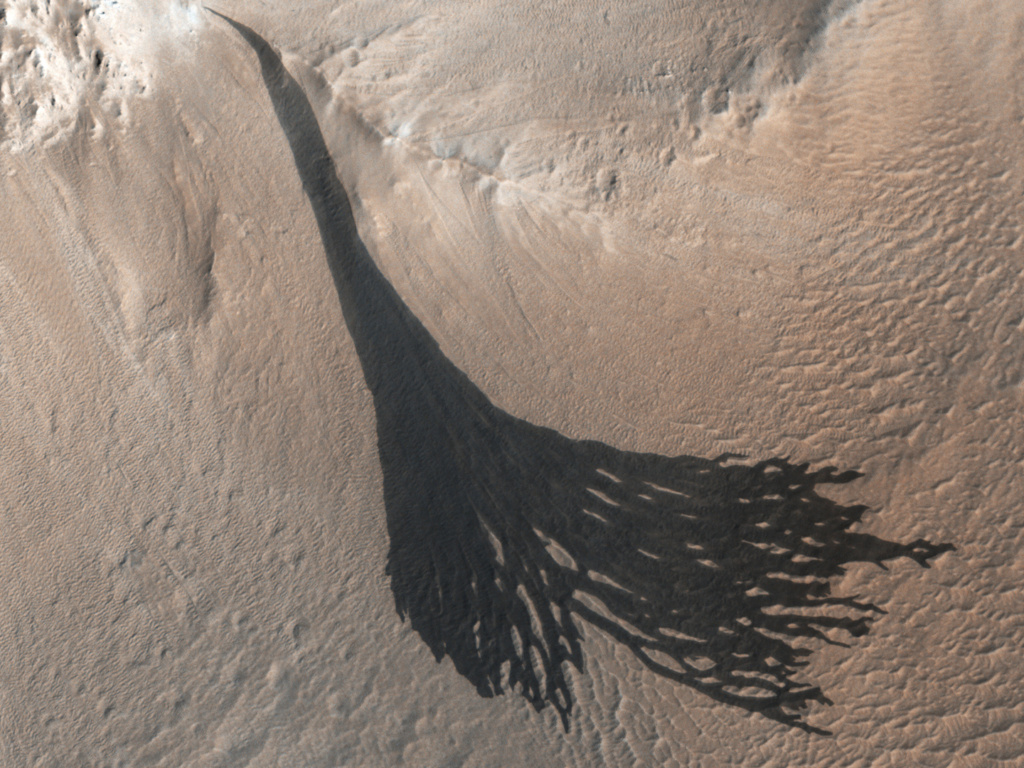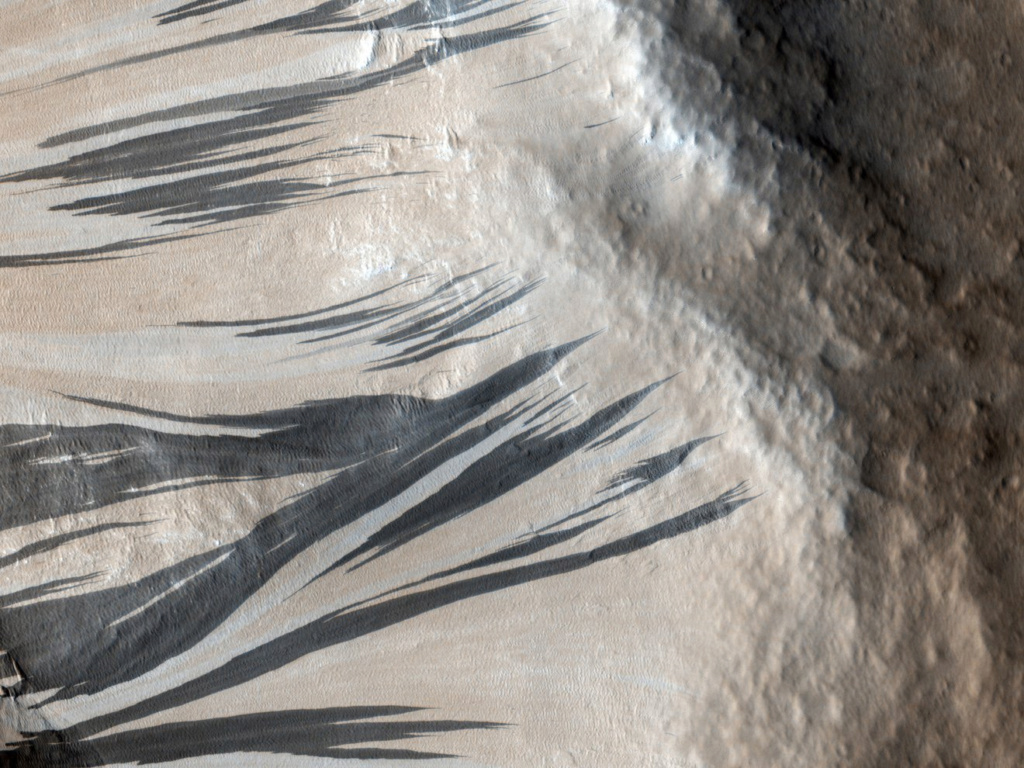Scientists finally solve the mystery of “invisible” frost and avalanches on Mars

Mars has vast regions of frost that can only be seen in the infrared range of the spectrum, not in visible light, for reasons scientists have not yet been able to explain.
But, using data from NASA's Mars Odyssey orbiter, scientists at the agency's Jet Propulsion Laboratory (JPL) in Pasadena, California, and Northern Arizona University in Flagstaff, Arizona, have come up with a theory whose results have been published in full in the journal JGR Planets that explains this "unnatural" frost. Visible” on the surface of Mars.
During the study, scientists suggest that the frost may be camouflaged by dust, an idea that could also explain the mysterious phenomenon similar to dust avalanches on Mars.

The dark lines, also known as "cliff lines", are caused by dust avalanches on Mars
In a more meaningful sense, the recent study shows that the ghostly white-blue frost that covers the surface of Mars is "dirty" and mixed with dust grains, making much of it hidden from the naked eye.
Frost develops on Mars overnight and consists of carbon dioxide. It is essentially dry ice, so when the sun rises, the frost evaporates rather than melts.
The temperature-sensitive visible-light camera on Mars Odyssey, which has been orbiting the Red Planet since 2001, regularly captures areas of blue and white frost.

'Slope lines' caused by dust avalanches in a region of Mars called Acheron Fossae, captured by the HiRISE camera aboard NASA's Mars Reconnaissance Orbiter on December 3, 2006.
Mars Odyssey is NASA's longest-lived Mars mission and carries the Thermal Emission Imaging System (THEMIS), an infrared or temperature-sensitive camera that provides a unique view of the Martian surface.
When scientists looked at images of the surface of Mars taken by NASA in visible light, the kind seen by the human eye, they saw a ghostly blue-and-white frost shining from the rising sun.
However, when they looked using the orbiter's heat-sensitive camera, frost appeared more widely, in areas where none was visible in visible light waves.
"Our first theory was that the ice could be buried there," Lucas Lange, an intern at the project's Jet Propulsion Laboratory, said in a statement. Dry ice is plentiful near the poles of Mars, but we were looking closer to the planet's equator, where it's generally so warm that no dry sleet forms."
So the scientists resorted to an alternative theory - they suspect that what the infrared camera captures is "dirty frost" contaminated with dust.
This dirty frost is masked by visible light, but a heat-sensitive camera can still capture its cold temperature.
This dirty frost theory will also explain another Martian mystery, the phenomenon of dust avalanches.
Scientists have identified long, dark streaks extending 3,300 feet down the slopes of Mars, caused by avalanches that slowly reshape mountainsides across the planet over millions of years, removing the upper layer of regolith to reveal a darker colored material beneath.
Researchers who have studied "invisible" frost have determined that these "slope lines", as they are known, appear in areas with morning frost.
So the scientists suggested that avalanches might occur as the frost evaporates, loosening dust grains on the slopes.
“Every time we send a mission to Mars, we discover strange new processes,” Chris Edwards, a planetary scientist at Northern Arizona University and co-author of the research paper, explained in the statement.
"We don't have anything like a sloping line on the ground," he added. You have to think beyond your experiences on Earth to understand Mars.”
Source: myspace
https://shahbapress.net/archives/25980?fbclid=IwAR2okYYxZB4U1tR0cXNVXwcq0CzIQLEb4i5_3NOzkJIkjVXYuWZr5EWpljE

